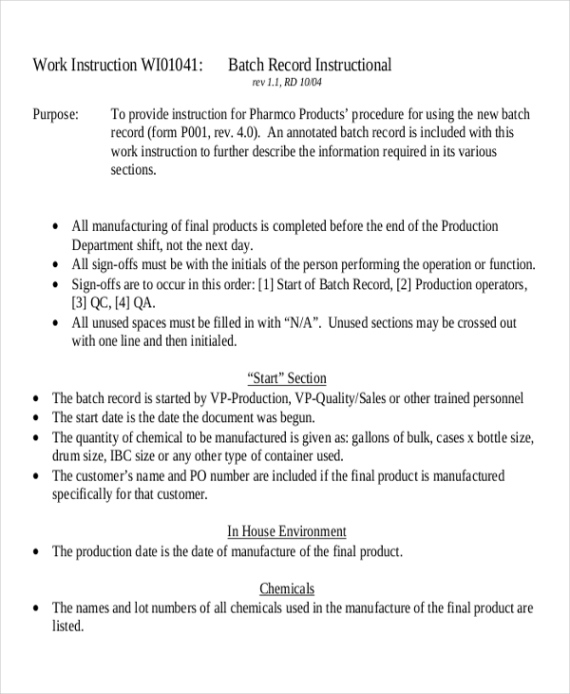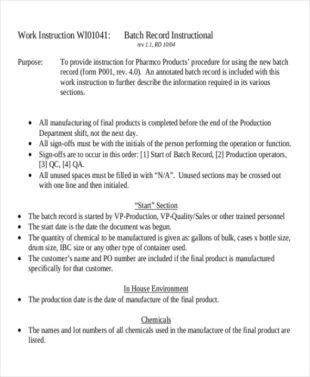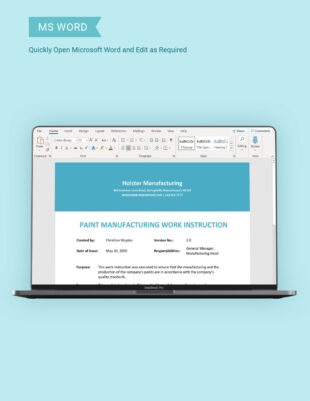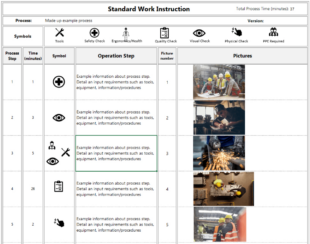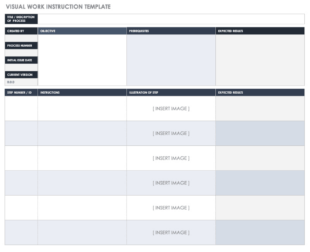Manufacturing assembly instructions template sample -In an age where details is exchanged at a rapid speed, the need for clear and concise communication has actually never ever been better. Among the unhonored heroes in this quest for clarity is the instruction template– a device that plays a important function in guaranteeing that instructions are shared successfully and effectively. Guideline themes are not just straightforward types or records; they are well-thought-out structures designed to simplify communication, minimize errors, and save time across numerous areas, from organization and education to innovation and medical care.
At its core, an Instruction Template is made to supply a systematic approach to job implementation. It normally includes several key parts: an introduction to the treatment, a detailed guide, essential sources or tools, and troubleshooting suggestions. This structure not only help in the understanding of the job available however additionally promotes its duplication throughout various scenarios or groups. By systematizing the layout, companies can preserve a high degree of consistency and lower the threat of mistakes.
One of the primary benefits of guideline templates is their ability to systematize communication. In organizations, for instance, direction layouts are commonly utilized to develop standard operating procedures (SOPs), training handbooks, and customer guides. This standardization guarantees that all employees receive the very same details provided in a constant layout, which is vital for keeping high quality and efficiency. It likewise aids in minimizing mistakes and misunderstandings, as the structured format makes it easier to follow the steps described.
In the educational market, direction templates play a comparable function. Educators and teachers utilize them to establish lesson strategies, projects, and project standards. By giving a clear structure for these instructional products, design templates help make certain that students obtain constant and thorough guidelines. This consistency is especially important in diverse class where students might have varying degrees of understanding and background understanding.
Along with its duty in training and interaction, an Instruction Template additionally adds to process improvement. By regularly reviewing and upgrading the templates, organizations can include feedback and lessons learned from previous jobs. This iterative method permits continuous refinement of procedures, leading to extra effective and effective methods over time. The Instruction Template thus comes to be a dynamic device that evolves with the organization’s requirements.
The style and layout of an Instruction Template are essential to its efficiency. A properly designed design template must be visually enticing and easy to navigate. This consists of making use of headings, bullet factors, and numbered checklists to clearly delineate each action of the procedure. In addition, incorporating visuals such as layouts or flowcharts can improve understanding, particularly for intricate instructions. The objective is to develop a file that is not just insightful but additionally user-friendly.
The layout of an instruction template commonly includes areas such as purposes, materials required, step-by-step procedures, and troubleshooting suggestions. This detailed strategy makes certain that all relevant elements of the job or procedure are covered. Design templates can additionally consist of visual aspects, such as representations or screenshots, which better enhance understanding and usability. By including these aspects, direction templates satisfy different learning styles and make complex information much more absorbable.
Along with their practical applications, guideline layouts can likewise add to continuous improvement initiatives. By frequently examining and upgrading layouts, organizations can incorporate responses and insights from users to fine-tune and improve their processes. This iterative strategy helps to identify and address any kind of concerns or ineffectiveness, resulting in recurring enhancements in performance and productivity.
Nonetheless, it is necessary to identify that Instruction Templates are not a one-size-fits-all option. Different jobs and tasks may require various kinds of design templates or differing degrees of detail. For that reason, companies must be prepared to tailor their templates to fit the specific demands of each task. This modification may entail changing the material, style, or even the language used in the layout.
Regardless of their several advantages, direction design templates must be made use of attentively to avoid possible risks. Over-reliance on themes can lead to standard and uninteresting material if not meticulously adjusted to the certain context. It is important to balance the standardization provided by layouts with the demand for creative thinking and personalization to guarantee that the directions are both reliable and engaging.
To conclude, direction templates are an necessary device for accomplishing uniformity and performance in job execution. Their capacity to provide clear, arranged, and adaptable standards makes them invaluable across a vast array of applications. By standardizing procedures and facilitating training and reference, guideline layouts contribute to boosted performance and continuous renovation, eventually leading to much more efficient and structured operations.
The image above posted by admin on November, 1 2024. This awesome gallery listed under Instruction Templates category. I really hope you’ll like it. If you would like to download the picture to your disk in top quality, the simplest way is by right click on the picture and select “Save As” or you can download it by clicking on the share button (X, Facebook, Instagram or Tiktok) to show the download button right below the picture.


